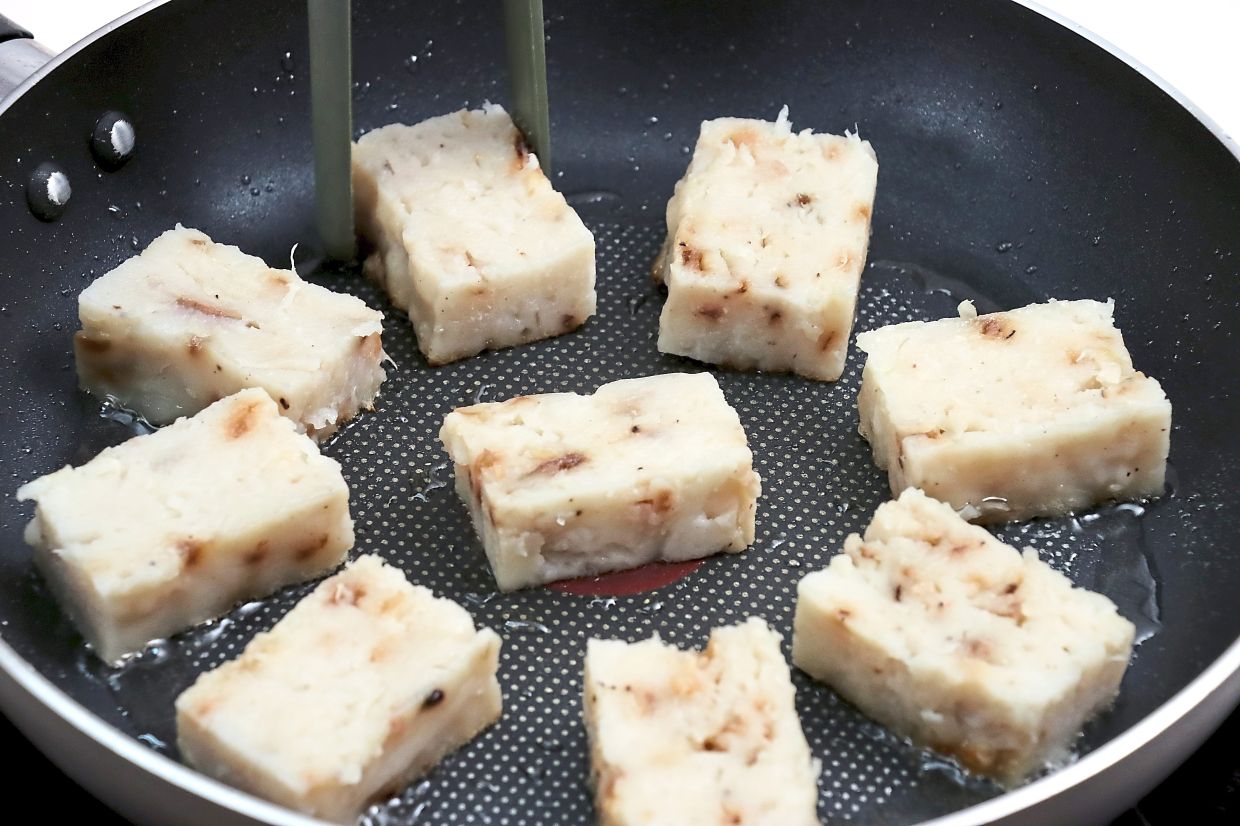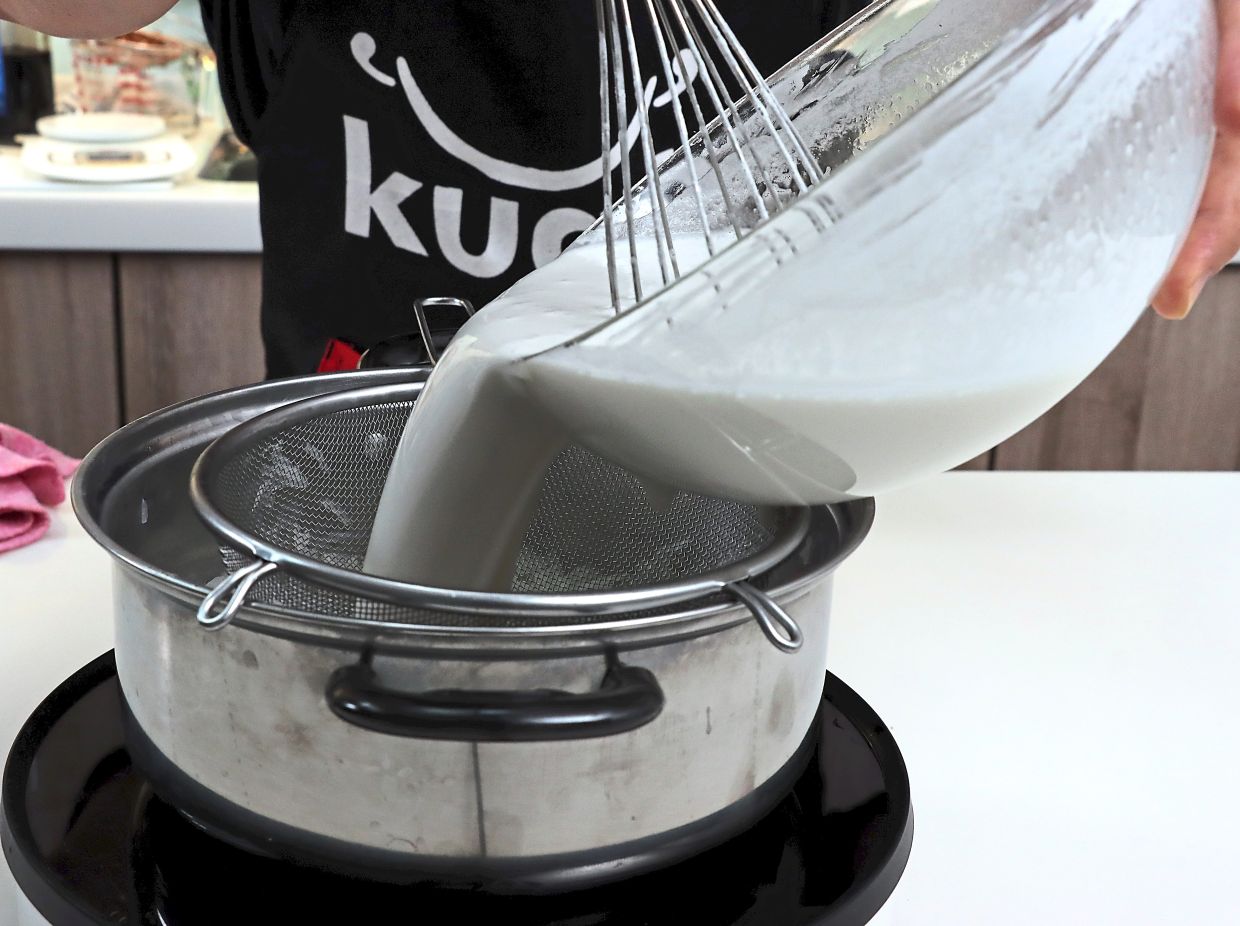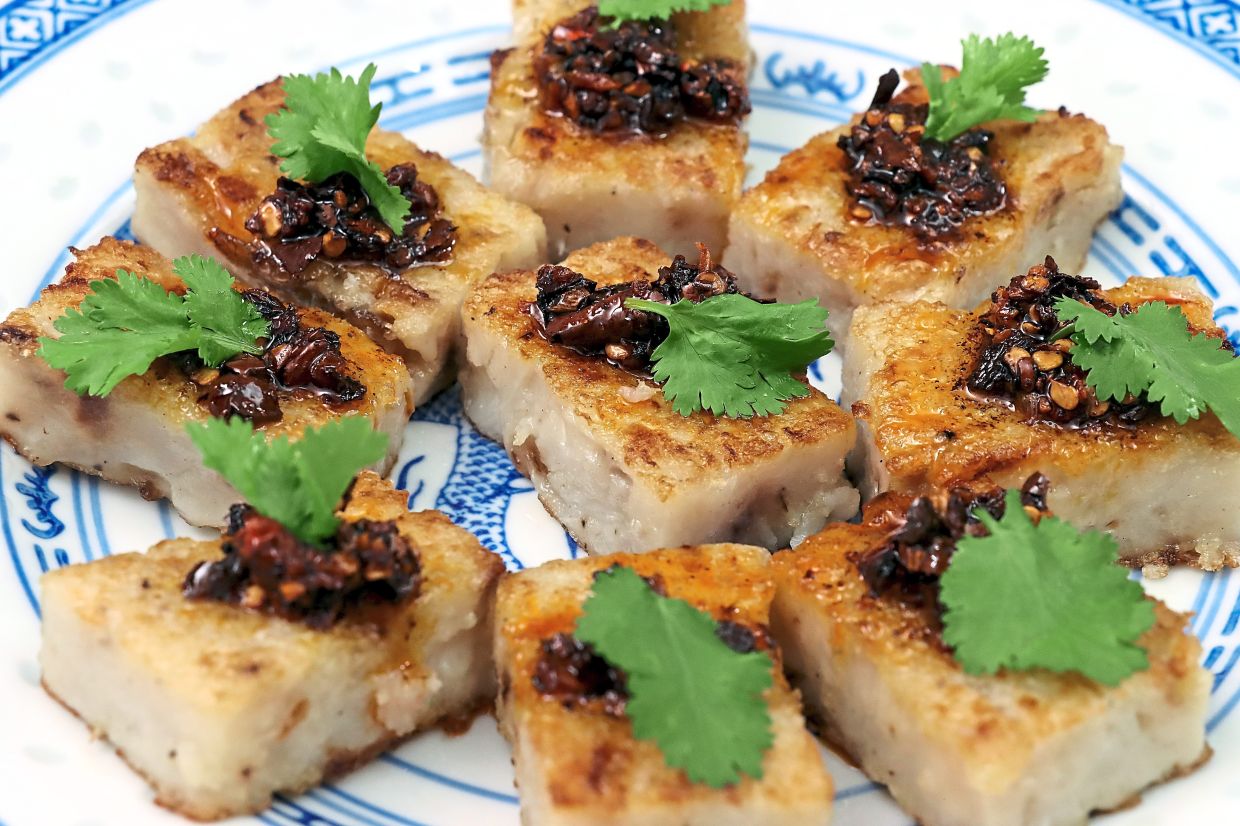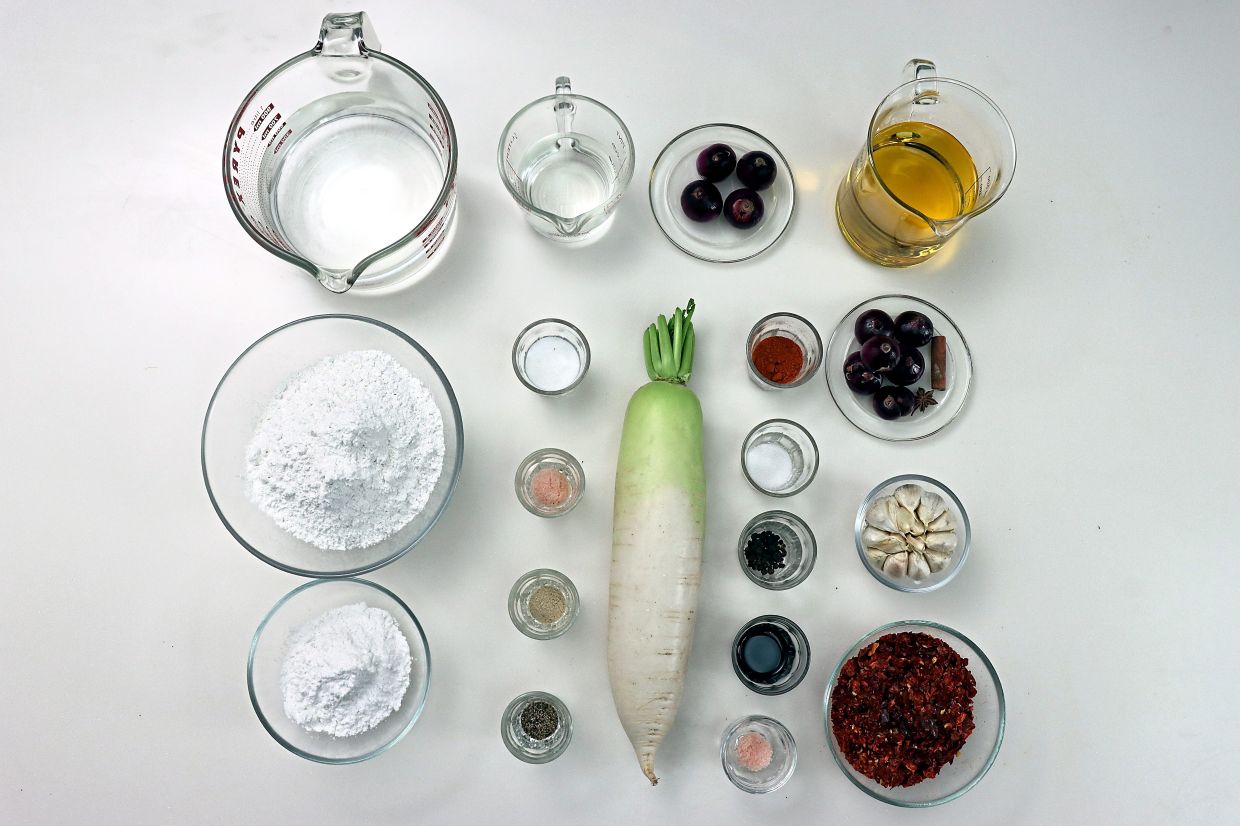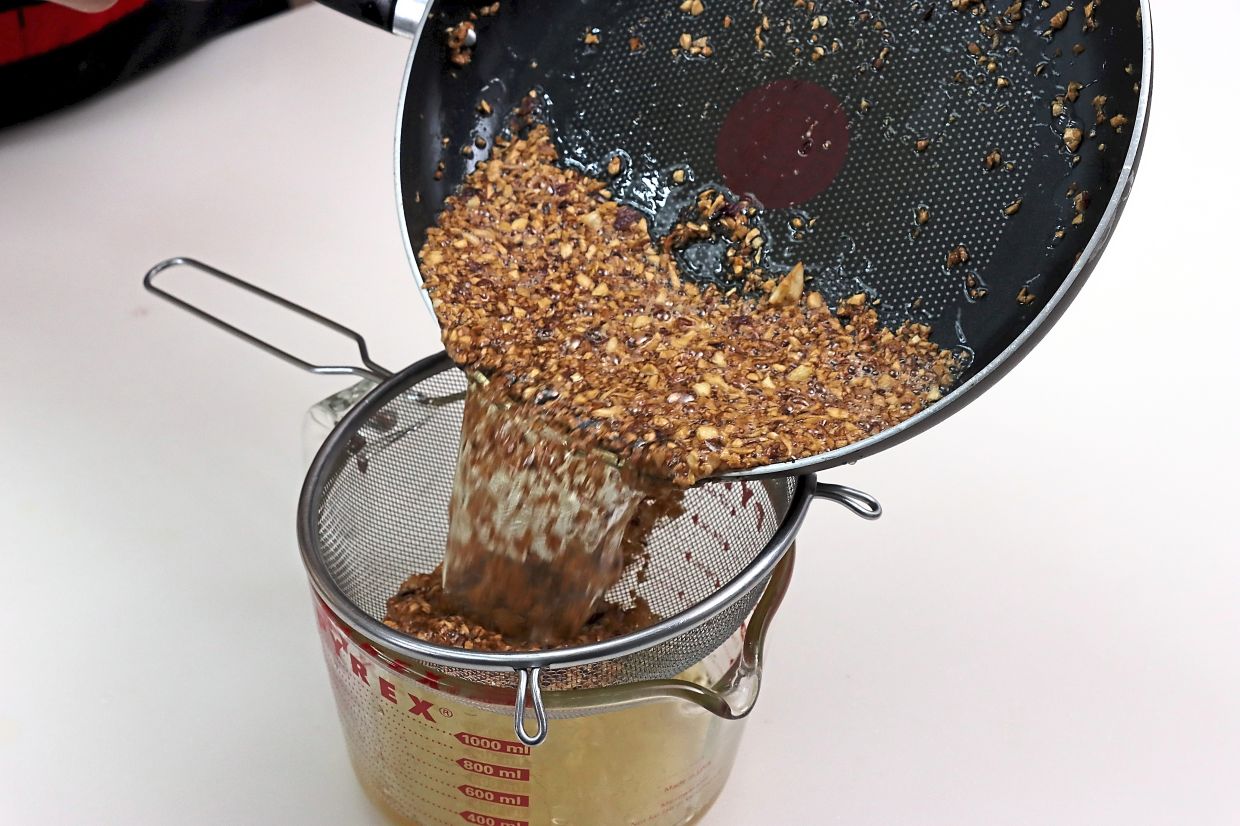Whisk a batter of rice flour and wheat starch in water and add to the shredded radish that has been simmered until soft.
RADISH cake, also known as daikon cake, is a dish often mistakenly referred to as turnip cake despite not having any of the root vegetable.
It enjoys widespread popularity among residents of southern China and its diaspora of Chinese descendants in Malaysia and Singapore.
It is called lo bak gou in Cantonese cuisine and can be eaten once it firms up after cooling down, or pan-fried and dipped in chilli sauce.
It is similar to the Teochew chai tow kway with a slight difference where the cake is cut into cubes and stir-fried with beansprouts and preserved radish.
The significance of this dish transcends its culinary appeal as a dim sum delicacy enjoyed throughout the year.
In Cantonese, gou sounds similar to “high”, while in Teochew, the word for radish is chai tow, which means “a head for luck”.
These linguistic nuances contribute to its esteemed status as an auspicious dish for the Chinese New Year celebrations.
The Cantonese tradition of the dish incorporates dried shrimp and diced Chinese sausage into the batter, whereas in the Teochew version, the cake abstains from meat products altogether.
I have opted to go completely vegan for this recipe, offering a vegetarian option for those who observe a meatless diet on the first day of Chinese New Year.
Even the crispy chilli oil is devoid of dried shrimp, allowing vegetarians to relish the meal together with their loved ones during this festive season.
It is worth noting the subtle distinction between the Chinese radish and the Japanese daikon.
Chinese radish, with its bulbous root, tends to be sweeter, while the Japanese daikon, cylindrical in shape, carries a hint of bitter piquancy. With the Chinese radish becoming increasingly scarce in our markets, many people turn to Japanese daikon as a substitute for this dish.
Be sure to cool the radish cake completely before cutting or it will stick to the knife. To prevent sticking, brush the knife with oil and you may use the shallot oil to grease the knife as well as the cake pan.
Radish cake
Ingredients
600g shredded radish (daikon)
125ml cold water
4 shallots, sliced thinly
Batter
300g rice flour
50g wheat starch
650ml cold water
Seasoning
2 tsp salt
2 tbsp sugar
½ tsp white pepper
½ tsp black pepper
Crispy chilli oil
1½ cups cooking oil
6 bulbs shallots, coarse chopped
1 bulb garlic, coarse chopped
1 cinnamon stick
1 pod star anise
1 tsp Sichuan peppercorns
50g chilli flakes
1 tbsp chilli powder
3 tbsp sugar
1 tbsp soy sauce
1 tsp salt to taste
Directions
Heat oil over medium in a frying pan to fry the sliced shallots until lightly golden.
Remove and set aside to be added into the batter. Use this oil to grease a 20cm square cake tin with a pastry brush.
In the same oil, fry the coarsely chopped shallots and garlic until lightly golden, then strain in a wire mesh and set aside to allow them to crisp up.
Return the oil to the frying pan to temper the cinnamon, star anise and Sichuan peppercorns over low heat.
Add the chilli flakes and fry until the oil turns red. Add chilli powder, sugar, soy sauce and salt and stir until the bubbling subsides.
Stir in the crispy shallot and garlic, then remove from the heat.
Pour into a heat proof jar to cool down completely before storing and serving.
Combine radish and water in a saucepan and simmer over low heat for 10-15 minutes until the radish has become soft and the liquid has evaporated.
Add the batter, fried sliced shallots and seasoning, then stir over medium heat until the mixture turns into a thick paste. Transfer the paste into the greased cake tin, then smooth the surface with a spatula.
Place the tin into the steamer and steam over boiling water for 45 minutes until cooked.
Remove the cake and allow it to cool down completely before cutting into slices.
In a non-stick frying pan, heat two tablespoons of oil over medium heat. Pan fry both sides of the cake until crispy and lightly golden.
Garnish with coriander leaves and serve warm with chilli oil on each slice of cake and more for those desiring a spicier bite.










